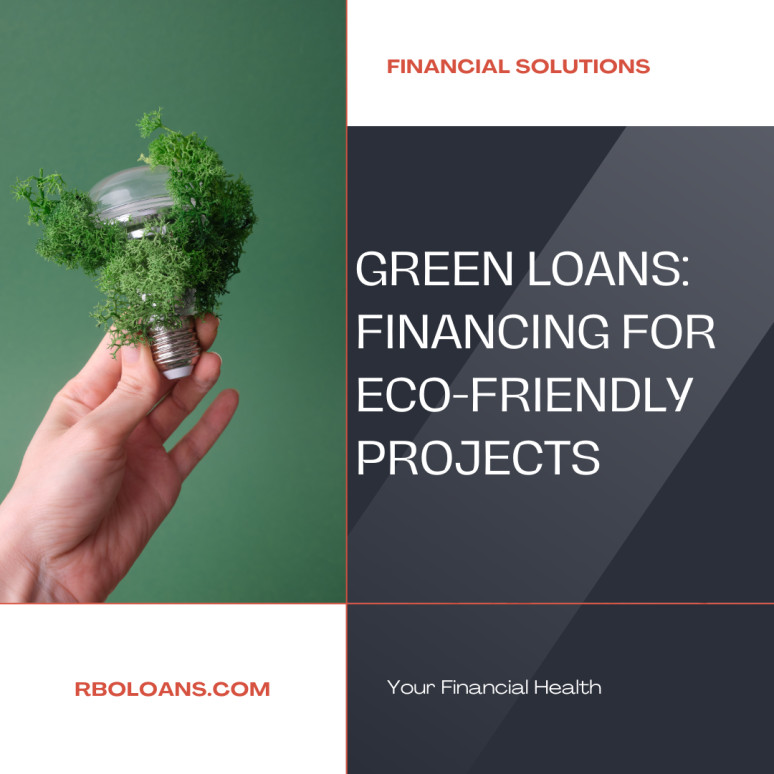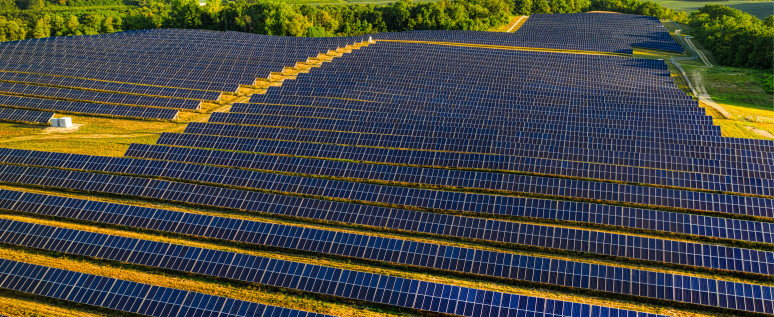Green Loans: Financing for Eco-Friendly Projects

In the quest for a sustainable future, financial instruments play a pivotal role in driving the transition towards a greener economy. Among these instruments, green financing has emerged as a key enabler, offering the necessary funds to support environmental and eco-friendly projects. This financing mechanism is not just about encouraging sustainability; it's also about making viable investments in the future of our planet.
For businesses and individuals in the UK and around the globe, understanding and accessing green financing can unlock opportunities to contribute positively to environmental conservation, while also reaping economic benefits.
What Are Green Loans?
Green loans represent a segment of green financing specifically designed to fund projects with a positive environmental impact. These loans are distinguished from traditional financing based on their explicit intention to support sustainable agricultural practices, renewable energy production, energy efficiency improvements, and pollution reduction, among other eco-friendly initiatives. Unlike standard loans, green loans often come with criteria related to the environmental sustainability of the project being financed. This focus ensures that funds are channeled into projects that contribute to environmental objectives such as reducing carbon emissions, enhancing energy efficiency, and preserving natural resources.
The distinction also extends to the loan's structure. Green loans might offer more favorable terms, such as lower interest rates or extended repayment periods, to incentivize projects that have a clear, measurable positive impact on the environment. Additionally, these loans typically require borrowers to demonstrate how their projects align with specific green principles or standards, which might involve third-party verification or certification processes.
Benefits of Green Loans
The advantages of green loans are multifaceted, extending beyond the environmental impact to offer tangible benefits for borrowers and lenders alike. For starters, borrowers can often access lower interest rates and better loan terms, reflecting the lower risk profile associated with sustainable projects and their potential for positive public reception. From an environmental standpoint, the funding of green initiatives directly contributes to the mitigation of climate change, supporting global efforts to transition towards a low-carbon economy.
Moreover, businesses that secure green financing may also enjoy enhanced brand reputation, as consumers and investors increasingly favor companies with strong sustainability credentials. This reputational boost can translate into competitive advantages, including increased customer loyalty and attractiveness to eco-conscious investors.
Criteria and Eligibility for Green Loans
For a project to qualify for a green loan, it must meet specific criteria that ensure its contributions to environmental sustainability are significant and measurable. Common requirements include the project's alignment with international or national green standards, such as the Green Loan Principles (GLP), which cover areas like renewable energy, pollution prevention, and biodiversity conservation. The eligibility process often involves detailed documentation of the project's environmental benefits, as well as third-party verification to ensure compliance with established green criteria.
Applicants for green loans typically need to demonstrate not only the environmental impact of their project but also its financial viability. Lenders want to ensure that the project can generate sufficient returns or savings to repay the loan, alongside achieving its environmental objectives.
Types of Projects Financed by Green Loans
Green loans have become a crucial funding source for a wide range of eco-friendly projects, each contributing to environmental sustainability in unique ways. These projects span various sectors, including renewable energy, energy efficiency, sustainable water and waste management, and more. Here’s a closer look at some of the most common types of initiatives financed by green loans:
- Renewable Energy Projects: These include solar power plants, wind farms, and hydroelectric facilities, which generate clean, renewable energy and reduce reliance on fossil fuels. Funding supports everything from the construction of new facilities to the expansion of existing ones.
- Energy Efficiency Upgrades: Projects that aim to reduce energy consumption and increase efficiency in buildings, industrial processes, and transportation. This can involve retrofitting buildings with energy-efficient lighting, insulation, and heating systems.
- Sustainable Water and Waste Management Systems: Initiatives that promote water conservation, waste reduction, and the recycling or reuse of materials. These projects are vital in managing natural resources more sustainably and reducing environmental pollution.
By financing these types of projects, green loans play a pivotal role in advancing sustainable development goals and combating climate change.

How to Apply for a Green Loan
Securing a green loan involves several steps, beginning with the identification of a project that not only meets the green criteria but also has a solid business case. Here's a basic guide to navigating the application process:
- Project Identification and Preparation: Start by clearly defining your project, ensuring it aligns with the lender’s green criteria. Prepare a detailed plan that outlines the project’s environmental benefits, technical feasibility, and financial projections.
- Research Potential Lenders: Look for financial institutions that offer green loans and compare their terms, interest rates, and eligibility criteria. This may include banks, credit unions, and specialized green financing institutions.
- Gather Necessary Documentation: Compile all required documentation, which may include business plans, environmental impact assessments, financial statements, and evidence of compliance with green standards.
- Submit Your Application: Once you’ve prepared your documentation and chosen a lender, submit your application according to their guidelines. Be prepared to answer additional questions and provide further information if requested.
- Undergo Assessment and Verification: The lender will assess your application to ensure that your project meets their criteria for a green loan. This process might involve third-party verification of the project’s environmental impact.
- Loan Approval and Disbursement: If your application is successful, the lender will offer you a loan agreement. Upon acceptance, the loan funds will be disbursed, allowing you to proceed with your eco-friendly project.
Challenges and Considerations
While green loans offer numerous benefits, applicants may face challenges such as strict eligibility criteria, the need for detailed documentation and verification, and sometimes a limited understanding of what constitutes a "green" project. To overcome these challenges, it’s crucial to:
- Clearly Understand Green Criteria: Ensure your project aligns with the lender’s green loan principles and eligibility requirements.
- Prepare Comprehensive Documentation: Be meticulous in documenting the environmental benefits and financial viability of your project.
- Seek Expert Advice: Consider consulting with environmental and financial experts to strengthen your application and project plan.
The Role of Green Financing in the UK
In the context of the UK, green financing is particularly significant. The country has set ambitious environmental targets, including achieving net-zero greenhouse gas emissions by 2050. Meeting these goals will require substantial investments in renewable energy, energy efficiency, and other green technologies. Green financing mechanisms, including green loans and bonds, are vital tools for mobilizing the necessary capital to support these initiatives.
Furthermore, the UK's financial sector, known for its global influence and innovation, is well-positioned to lead in the development and promotion of green financing solutions. By fostering a strong market for green finance, the UK can not only advance its own sustainability objectives but also set an example for other nations to follow.
Conclusion
Green loans represent a crucial juncture where environmental sustainability meets financial innovation. By providing the means to fund eco-friendly projects, green financing plays an indispensable role in the global effort to combat climate change and promote a sustainable future. As the market for green loans continues to evolve, it offers hope and a pathway for businesses, governments, and individuals to make meaningful contributions to the planet's health. For those in the UK and beyond, embracing green financing is not just an investment in eco-friendly projects; it's an investment in the future of our world.
This exploration of green loans and green financing underscores the potential and importance of these financial instruments in supporting eco-friendly initiatives. Whether you're a business owner looking to invest in sustainable technology, a policymaker aiming to encourage green practices, or simply someone interested in the future of finance and sustainability, the world of green loans offers exciting opportunities to make a difference.



-small.jpg)

